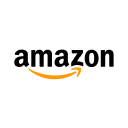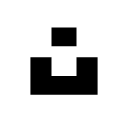
How I Built A $0 To $100K/Month Crypto Tax Calculator
Note: This business is no longer running. It was started in 2018 and ended in 2023. Reason for closure: Shut down.
Hello! Who are you and what business did you start?
Hello, I am Vamshi Vangapally, CEO and Co-founder of BearTax. We built a platform for cryptocurrency traders and accountants to help them consolidate trades and calculate taxes without heavy lifting.
BearTax offers 2 SaaS products, Beartax of traders and an accounting suite for accounting professionals. The B2C platform for traders is widely used by those who invested or traded cryptocurrency to file their taxes. The complexity of the problem is crazy because there’s not just one Bitcoin! But there are 2000+ cryptocurrencies and they are sold/traded over 1000+ exchanges across the world.
To maximize profit, traders often trade on various exchanges using USD (Fiat currency) or Bitcoin (BTC). Everytime a trader sells a cryptocurrency to USD (called Fiat currency which means a native currency to their own country) or buys one coin with another (he’s selling first coin to buy a second one), it is a taxable event (at least in the US according to IRS guidelines). More about the problem explained here. To solve this, we created BearTax.

Download the report and join our email newsletter packed with business ideas and money-making opportunities, backed by real-life case studies.

Download the report and join our email newsletter packed with business ideas and money-making opportunities, backed by real-life case studies.

Download the report and join our email newsletter packed with business ideas and money-making opportunities, backed by real-life case studies.

Download the report and join our email newsletter packed with business ideas and money-making opportunities, backed by real-life case studies.

Download the report and join our email newsletter packed with business ideas and money-making opportunities, backed by real-life case studies.

Download the report and join our email newsletter packed with business ideas and money-making opportunities, backed by real-life case studies.

Download the report and join our email newsletter packed with business ideas and money-making opportunities, backed by real-life case studies.

Download the report and join our email newsletter packed with business ideas and money-making opportunities, backed by real-life case studies.




















